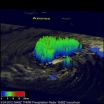(Press-News.org) We've heard it time and time again: exercise is good for us. And it's not just good for physical health – research shows that daily physical activity can also boost our mental health. But what actually accounts for the association between exercise and mental health?
A new article in Clinical Psychological Science, a journal of the Association for Psychological Science, explores whether certain psychosocial factors may help to explain the benefits of daily physical activity for adolescents' mental health.
Karin Monshouwer of the Trimbos Institute in the Netherlands and colleagues at Trimbos and VU University Medical Center specifically wanted to examine two existing explanations for the link between exercise and mental health. The self-image hypothesis suggests that physical activity has positive effects on body weight and body structure, leading to positive feedback from peers and improved self-image, and ultimately improving mental health. The social interaction hypothesis, on the other hand, holds that it's the social aspects of physical activity – such as social relationships and mutual support among team members – that contribute to the positive effects of exercise on mental health.
Monshouwer and her colleagues surveyed over 7000 Dutch students, ages 11 to 16. The adolescents completed validated surveys aimed at assessing their physical activity, mental health problems, body weight perception, and participation in organized sports. The researchers also gathered data on the adolescents' age, gender, and socioeconomic status; whether they lived at home with their parents; and whether they lived in an urban area.
The researchers found that adolescents who were physically inactive or who perceived their bodies as either "too fat" or "too thin" were at greater risk for both internalizing problems (e.g., depression, anxiety) and externalizing problems (e.g., aggression, substance abuse). Adolescents who participated in organized sports, on the other hand, were at lower risk for mental health problems.
Confirming both the self-image hypothesis and the social interaction hypothesis, adolescents' body weight perception (i.e., "too heavy," "good," or "too thin") and sports club membership each partially accounted for the relationship between physical activity and mental health, even after taking adolescents' backgrounds into account.
These results suggest that certain psychosocial factors – body image and social interaction – may help to explain at least part of the connection between physical activity and mental health. The researchers acknowledge, however, that other factors, such as the physiological effects of exercise, are probably also at work.
"We think that these findings are important for policymakers and anyone who works in healthcare or prevention. Our findings indicate that physical activity may be one effective tool for the prevention of mental health problems in adolescence," says Monshouwer.
Monshouwer and her colleagues hope that future studies will be able to examine similar questions while following participants over time. Such longitudinal studies could help researchers to understand how physical activity type and context might influence the relationship between exercise and mental health.
###
Clinical Psychological Science — a new journal from APS — publishes advances in clinical science and provides a venue for cutting-edge research across a wide range of conceptual views, approaches, and topics. The journal encompasses many core domains that have defined clinical psychology, but also boundary-crossing advances that integrate and make contact with diverse disciplines and that may not easily be found in traditional clinical psychology journals. Among the key topics are research on the underlying mechanisms and etiologies of psychological health and dysfunction; basic and applied work on the diagnosis, assessment, treatment, and prevention of mental illness; service delivery; and promotion of well-being.
For more information about this study, please contact: Karin Monshouwer at kmonshouwer@trimbos.nl.
Clinical Psychological Science is APS's newest journal. For a copy of the article "Possible Mechanisms Explaining the Association Between Physical Activity and Mental Health: Findings From the 2001 Dutch Health Behaviour in School-Aged Children Survey" and access to other Clinical Psychological Science research findings, please contact Anna Mikulak at 202-293-9300 or amikulak@psychologicalscience.org.
Exercise does a body -- and a mind -- good
Self-image and social interaction help to explain the link between exercise and mental health
2012-09-26
ELSE PRESS RELEASES FROM THIS DATE:
Incorporating safety into design important for active living and injury prevention
2012-09-26
Designing or modifying buildings and communities to facilitate physical activity must include strategies to maximize safety. A new report released today, Active Design Supplement: Promoting Safety, by the Johns Hopkins Center for Injury Research and Policy, New York City Department of Health & Mental Hygiene's Built Environment and Healthy Housing Program, and the Society for Public Health Education (SOPHE) provides explicit guidelines for urban planners, architects, public health advocates, and others to consider when promoting active designs. Experts from New York City's ...
Chronic kidney disease a warning sign independent of hypertension or diabetes
2012-09-26
Two new studies from the Johns Hopkins Bloomberg School of Public Health and the Chronic Kidney Disease Prognosis Consortium found that the presence of chronic kidney disease itself can be a strong indicator of the risk of death and end-stage renal disease (ESRD) even in patients without hypertension or diabetes. Both hypertension and diabetes are common conditions with chronic kidney disease with hypertension being the most prevalent. The studies were released online in advance of publication in The Lancet.
Chronic kidney disease affects 10 to 16 percent of all adults ...
Mathematics and fine art: Digitizing paintings through image processing
2012-09-26
Philadelphia – September 25, 2012—The current trend to digitize everything is not lost on fine art. Documenting, distributing, conserving, storing and restoring paintings require that digital copies be made. The Google Art Project, which brings art from galleries around the world to online audiences, was launched in early 2011 for precisely these reasons. Google's project has been a complex undertaking, however, carried out under carefully controlled settings using state-of-the-art equipment and requiring rigorous postproduction work.
In a paper published this month ...
Hypertension not so simple
2012-09-26
A recently published editorial in the Journal of the American Society of Hypertension (JASH), "Ambulatory Blood Pressure Monitoring Should Be Included in the National Health and Nutritional Examination Survey (NHANES)," recognizes the importance of this national survey instrument but questions the efficiency of its diagnostic methods in assessing hypertension in the population.*
Since the 1960s, CDC has utilized traditional blood pressure screening using a sphygmomanometer to measure the brachial artery pressure (a diagnostic instrument used since 1880). Drs. William ...
New UF study shows river turtle species still suffers from past harvesting
2012-09-26
GAINESVILLE, Fla. — University of Florida researchers studying river turtles in Missouri found populations of the northern map turtle have not recovered from harvesting in the 1970s.
Scientists used data collected by Florida Museum of Natural History herpetology curator Max Nickerson in 1969 and 1980 as a baseline, then surveyed the same stretch of river in the Ozarks in 2004 to determine the northern map turtles had not recovered from a previous 50 percent population loss caused by harvesting, likely for food. River turtles help ecosystems function by cycling nutrients ...
NYU biologists uncover dynamic between biological clock and neuronal activity
2012-09-26
Biologists at New York University have uncovered one way that biological clocks control neuronal activity — a discovery that sheds new light on sleep-wake cycles and offers potential new directions for research into therapies to address sleep disorders and jetlag.
"The findings answer a significant question — how biological clocks drive the activity of clock neurons, which, in turn, regulate behavioral rhythms," explained Justin Blau, an associate professor in NYU's Department of Biology and the study's senior author.
Their findings appear in the Journal of Biological ...
Cryopreservation of induced pluripotent stem cells improved the most by one product
2012-09-26
Tampa, Fla. (Sep. 25, 2012) – In a study to determine the best cryopreservation (freezing) solution to maintain induced pluripotent stem (iPS) cells, a team of researchers from Japan compared 12 kinds of commercially prepared and readily available cryopreservation solutions and found that "Cell Banker 3" out-performed the other 11 solutions by allowing iPS cells to be preserved for a year at degrees C in an undifferentiated state.
The study is published in a recent special issue of Cell Medicine [3(1)], now freely available on-line at: http://www.ingentaconnect.com/content/cog/cm.
"iPS ...
Cutting-edge technology makes NASA's hurricane mission a reality
2012-09-26
Cutting-edge NASA technology has made this year's NASA Hurricane mission a reality. NASA and other scientists are currently flying a suite of state-of-the-art, autonomously operated instruments that are gathering difficult-to-obtain measurements of wind speeds, precipitation, and cloud structures in and around tropical storms.
"Making these measurements possible is the platform on which the instruments are flying," said Paul Newman, the deputy principal investigator of NASA's Hurricane and Severe Storm Sentinel (HS3), managed by NASA's Goddard Space Flight Center in Greenbelt, ...
October LITHOSPHERE delivered online
2012-09-26
Boulder, Colo., USA – The October issue of Lithosphere covers geology in Wyoming, USA; the California Coast Ranges, USA; the Alpine Fault, New Zealand; the South Atlantic seafloor; the central Himalaya in Nepal; and Sidekan, Kurdistan Region, Iraqi Zagros suture zone. Topics and methods include tectonics, orogeny, hazards, paleogeography, trigonometrics, multiple-point data analysis, LiDAR, oceanic isostasy, computer modeling, and spectroscopy.
Abstracts are online at http://lithosphere.gsapubs.org/content/current. Representatives of the media may obtain complimentary ...
NASA satellites see Tropical Storm Nadine 'refuse to go away'
2012-09-26
Nearly two weeks after becoming a tropical storm in the central Atlantic back on September 11th, NASA satellites confirm that Nadine is still spinning away south of the Azores as a minimal tropical storm. One of those satellites called TRMM has been providing forecasters with rainfall rates and cloud heights.
Nadine initially formed into a tropical depression from an African easterly wave that had propagated westward out into the central Atlantic from the coast of Africa. Nadine initially moved northwestward then northward before getting caught up in the westerlies over ...
LAST 30 PRESS RELEASES:
The perfect plastic? Plant-based, fully saltwater degradable, zero microplastics
Bias in data may be blocking AI’s potential to combat antibiotic resistance
Article-level metrics would provide more recognition to most researchers than journal-level metrics
Satiety’s little helper: Protein that supports appetite regulating protein identified
UF dives deep into predicting storm damage with computer models
A stormy ocean voyage yields insights on the global carbon cycle
Scientists identify first non-coding gene that controls cell size
Demonstration of altermagnetism in RuO₂ thin films -- A new magnetic material for the AI era
Penn researchers awarded $25M to conduct trial using smartphones to fight heart disease
PCORI awards funding for new patient-centered healthcare research
Exploring the origins of the universe: 145 low-noise amplifiers complete ALMA telescopes
Empress cicada wings help illuminate molecular structure
Using sound waves to detect helium
Time burden in patients with metastatic breast and ovarian cancer from clinic and home demands
Researchers discover bias in AI models that analyze pathology samples
Scientists ID potential way to prevent brain injuries from triggering Alzheimer's
MASTER 2nd Open Call: Execution period kick-off
Algae for health in food and pharma
Advanced microrobots driven by acoustic and magnetic fields for biomedical applications
Chicago health information leader recognized for raising CPR readiness and blood pressure awareness
The Intimate Animal, a new book from Kinsey Institute Executive Director Dr. Justin Garcia
When blue-collar workers lose union protection, they try self-employment
New video dataset to advance AI for health care
MEA-based graph deviation network for early autism syndrome signatures in human forebrain organoids
New modeling approach sheds light on rare gut disease
Study documents potentially hazardous flame retardants in firefighter gear
Can certain bacteria regulate aging of the immune system and its related alterations?
AI model helps diagnose often undetected heart disease from simple EKG
There are fewer online trolls than people think
Cell membrane fluctuations produce electricity
[Press-News.org] Exercise does a body -- and a mind -- goodSelf-image and social interaction help to explain the link between exercise and mental health

